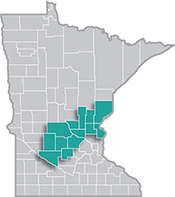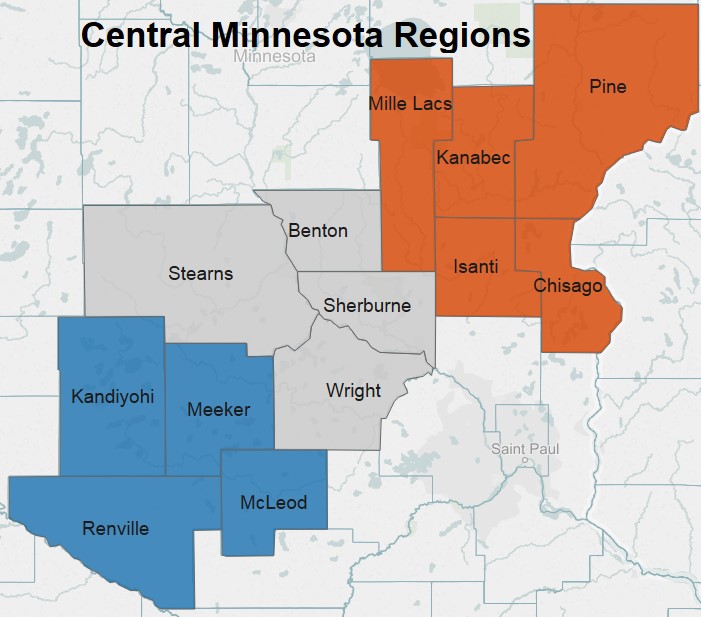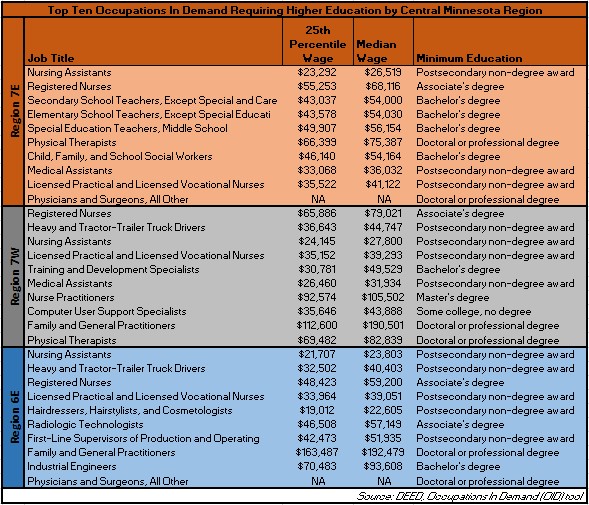 Central Minnesota is a manufacturing stronghold, with several global manufacturing firms operating there.
Central Minnesota is a manufacturing stronghold, with several global manufacturing firms operating there.
The region is especially well known for its expertise in food processing, printing, furniture manufacturing, appliances, machinery and heavy equipment manufacturing.
View our latest blogs on CareerForce. Want the freshest data delivered by email? Subscribe to our regional newsletters.
3/15/2016 10:09:32 AM
Luke Greiner
In the face of a tightening labor market, it’s important to know the skill requirements that employers are reporting, especially those that require postsecondary education. According to DEED’s Occupations in Demand tool, 46 percent of the occupations most in demand in Central Minnesota require education beyond high school.
Higher education not only opens the door to a larger variety of careers, it also allows access to some of the highest paying jobs in the region. If there aren’t enough workers graduating with in-demand skill sets in these job openings, they become more difficult to fill, which can lead starting wages to increase.
The largest industries shape what occupations are in demand in Central Minnesota, which includes Regions 7E, 7W, and 6E combined (see map of Central Minnesota Regions). Health care and social assistance industry is the largest industry, providing 18.2 percent of all jobs. Manufacturing – with about 15.4 percent of total employment – is close behind.

This industry mix is evident when looking at the top ten occupations in demand that require education beyond a high school diploma. The table below is a sample of a much larger list of Occupations in Demand in the region, focusing just on those that have at least a postsecondary non-degree award as the minimum education required to get started in the career.

Most of these occupations, especially those requiring an associate degree, bachelor’s degree or higher, have high wages in Central Minnesota. While higher education can increase the earning potential for workers, the maximum return on investment occurs when newly minted skills are aligned with the job market. A mutual benefit results when a highly skilled worker attains a position in a high demand occupation: The employer staffs a difficult-to-fill position, while the employee likely benefits from a wage advantage.
Aligning local education programs with the needs of regional employers gives students the tools to succeed in their local economy. In addition to our market research, DEED’s Occupations in Demand tool provides insight to the skills most in demand in the regions. Even high schools can benefit from offering and aligning coursework that complements local higher education programs that track with the regional economy.
Contact Luke Greiner at 320-308-5378.